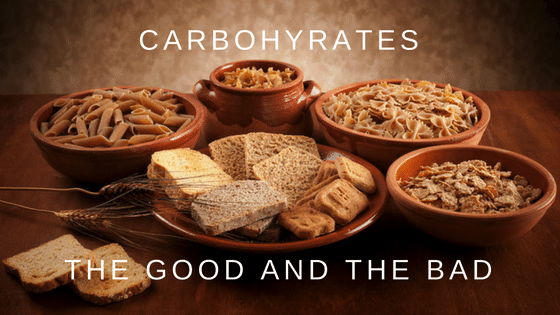Carbs tend to get a bad wrap and whenever people try to lose weight, they try to cut out carbs completely. However, this is actually very unhealthy and can lead to a lot of muscle loss, and even fat retention. Not to mention, can put a fairly large toll on not just your body, but your wallet as well! So here I will be going over how to properly include carbohydrates in your diet so you can still burn fat, build muscle, stay healthy and energized, and all while not spending your entire paycheck on vegetables, chicken, fish, and eggs!
Energy
First of all, carbohydrates are your bodies most immediate source of energy. So cutting them completely out will make you feel fatigue, sluggish, and both physically and mentally drained! Making them important to include in your diet. The trick is to keep it at the right amounts, and from the best sources. Your exact amounts per day depend on your body. Height, weight, activity level, metabolism, goals, etc. It is recommended for any healthy individuals to get at least 150 grams of carbohydrates per day, but if you are very lean or more active (exercise 3+ times per week) you will still lose weight by increasing to a maximum of 2 grams per lb of body weight. For example: A healthy, fairly active 150 pound individual who engages in 3 or more days of physical activity for 45+ minutes (pick up game, jog, workout) can still lose weight with 300 grams of carbohydrates per day, while fueling their body with the energy needed to perform!
Best Carbohydrate Sources
There are actually a few categories you can break carbs into. Mostly simple and complex. The simple carbs are sugars and white grains such as white potatoes, white rice, white bread, etc. These are a faster acting carbohydrate and tend to be the “bad carbs”. They can leave you feeling hungry even after you’ve had the calories from them. The complex carbohydrates contain more fiber, a more controlled release for longer lasting sustained energy, and require your metabolism to work a little harder to break down which can lead to more calorie burn. These are the “good carbs” and are found in foods like oatmeal, sweet potatoes, brown rice, black beans, almonds, and more. Below is a chart of some great complex carb choices with a breakdown on their calorie and macronutrient count.
| Food | Serving Size | Calories | Fats | Carbs | Protein | Sugar | Fiber |
| Quinoa | 1/4 Cup (46 g) | 170 | 2.5 | 31 | 6 | 3 | 3 |
| Brown Rice | 1/2 Cup (50 g) | 180 | 1.5 | 39 | 4 | 0 | 2 |
| White Rice | 1/2 Cup (55 | 200 | 0 | 45 | 5 | 0 | 0 |
| Oatmeal | 1/2 Cup (40 g) | 150 | 3 | 27 | 5 | 1 | 4 |
| Sweet Potatoes | 100 g | 84 | 0 | 20 | 2 | 3 | 4 |
| Beans (Black) | 1/2 cup (130 g) | 120 | 1 | 23 | 8 | 0 | 8 |
| Whole Grain Bread | 1 Slice | 60 | 0.5 | 11 | 4 | 2 | 2 |
| Whole Grain Bagel | 1 Bagel | 240 | 2 | 49 | 10 | 6 | 7 |
| Rice Cake | 1 Rice Cake | 35 | 0 | 7 | 1 | 0 | 0 |
| Mixed Vegetables | 3 oz | 30 | 0 | 6 | 3 | 1 | 3 |
| Soy Beans | 100 g | 105 | 3 | 9 | 8 | 1 | 4 |
| Whole Wheat Tortilla | 1 Tortilla | 90 | 3 | 7 | 9 | 0 | 9 |
| Whole Wheat Pasta | 56 g | 180 | 1.5 | 39 | 8 | 2 | 6 |
Cost
Lastly, trying to maintain a very low carbohydrate diet can get very expensive since the foods you do eat, such as meats, fish, eggs, and healthy fats are more expensive. It is important to keep these foods in your diet to hit your daily protein and fat needs, but if that is all you have, you will need to eat a lot more of it than necessary to meet your overall calorie needs. So including the recommended carbohydrate amounts listed above will help you meet your daily calorie needs to build muscle, burn fat, keep your metabolism going all day long, stay energized, and keep your wallet happy to!
Thank you for reading, and I hope this helped you understand some differences between certain carbohydrates and how to include them into your diet for optimizing muscle build and fat burn! For more information please visit my Custom Meal Plans Page, Youtube Channel, and other Exercise and Nutrition Blog Posts!

